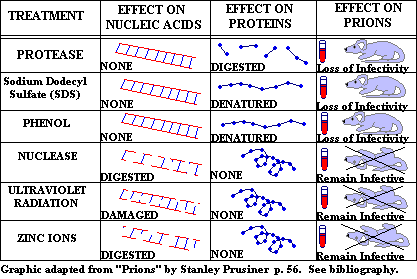A series of experiments by Dr. Prusiner indicates that prions are protein.  |
A series of experiments by Dr. Prusiner indicates that prions are protein.  |
 sheet is the more stable shape for proteins, so given enough prompting, the transformation can occur.
sheet is the more stable shape for proteins, so given enough prompting, the transformation can occur.
